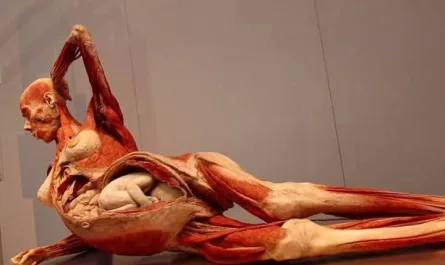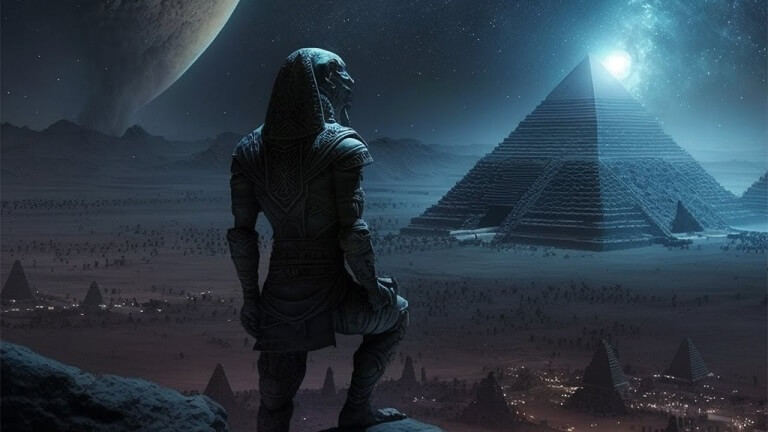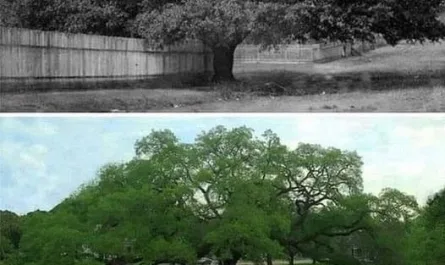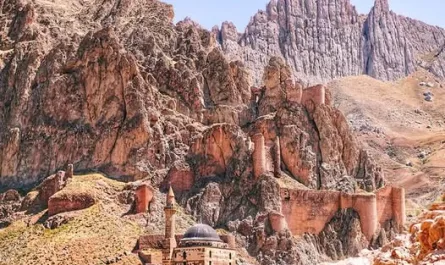Main Street – Deadwood, Dakota
Nestled in the rugged Black Hills of South Dakota, Main Street in Deadwood is a living testament to the Wild West’s storied past. This historic thoroughfare, once a bustling hub of gold rush fever, outlaws, and pioneers, continues to captivate visitors with its blend of preserved history, vibrant culture, and modern charm. From its notorious beginnings to its current status as a National Historic Landmark, Main Street, Deadwood, offers a unique glimpse into the heart of the American frontier.
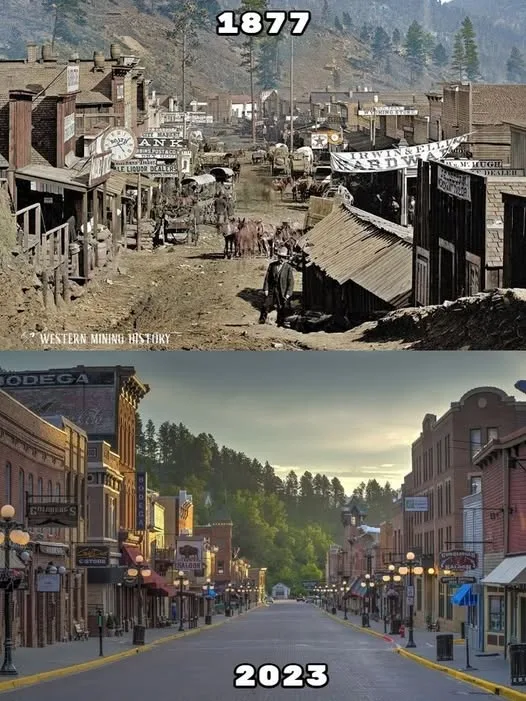
A Glimpse into History
Deadwood’s Main Street came to life in the 1870s, sparked by the Black Hills Gold Rush. In 1874, Lieutenant Colonel George Armstrong Custer’s expedition confirmed gold in the region, triggering a flood of prospectors, entrepreneurs, and adventurers. By 1876, Deadwood was a boomtown, and Main Street was its beating heart—a chaotic blend of saloons, gambling halls, and makeshift businesses catering to a rough-and-tumble clientele.
The street was infamous for its lawlessness. Figures like Wild Bill Hickok, Calamity Jane, and Seth Bullock walked its dusty paths, their legends woven into Deadwood’s fabric. Hickok’s murder in 1876 at the No. 10 Saloon during a poker game cemented Main Street’s place in Western lore, with the “Dead Man’s Hand” (aces and eights) becoming a symbol of the town’s wild spirit.
Fires ravaged Deadwood multiple times, notably in 1879 and 1885, but Main Street was rebuilt each time, evolving from wooden shacks to sturdy brick buildings. Many of these structures still stand, their facades preserving the architectural style of the late 19th century—ornate cornices, large windows, and signs of a bygone era.
Main Street Today
Today, Main Street, Deadwood, is a vibrant blend of history and modern entertainment. Designated a National Historic Landmark in 1961, the street retains its 19th-century character while embracing tourism and gaming. The entire city of Deadwood legalized gambling in 1989 to fund historic preservation, transforming Main Street into a unique destination where visitors can step back in time while enjoying modern amenities.
Historic Sites and Attractions
Saloon No. 10: Known as the site of Wild Bill Hickok’s death, this iconic saloon offers a museum, live reenactments, and a lively bar atmosphere. Visitors can view artifacts from Deadwood’s past and even sit at a poker table reminiscent of Hickok’s final game.
Adams Museum: Located just off Main Street, this museum houses artifacts from Deadwood’s gold rush days, including Calamity Jane’s letters and Potato Creek Johnny’s gold nugget.
Mount Moriah Cemetery: A short trip from Main Street, this hillside cemetery is the final resting place of Hickok, Calamity Jane, and other Deadwood legends, offering panoramic views and a poignant connection to the past.
Historic Reenactments: Main Street hosts daily reenactments of Wild Bill’s shooting and other historic events, bringing the Wild West to life for visitors.
Gaming and Entertainment
The legalization of gambling has revitalized Main Street, with casinos like the Silverado-Franklin Historic Hotel & Gaming Complex and the Mineral Palace offering slots, poker, and blackjack in historic settings. Many of these venues retain their original facades, blending slot machines with old-west ambiance. Live music, seasonal festivals like Deadwood’s Days of ’76, and Wild West-themed events keep the street buzzing year-round.
Dining and Shopping
Main Street is lined with restaurants and shops that cater to diverse tastes. Visitors can enjoy a hearty steak at the Deadwood Social Club, sip craft cocktails at the Gem Saloon, or grab a quick bite at a modern café. Boutiques offer everything from Western apparel to handmade jewelry, while souvenir shops sell replicas of gold pans and historic photos.
Cultural Significance
Main Street’s preservation reflects Deadwood’s commitment to honoring its past while embracing the future. The street’s historic buildings, many listed on the National Register of Historic Places, are meticulously maintained, with plaques detailing their stories. The Deadwood Historic Preservation Commission uses gaming revenue to fund restoration projects, ensuring that Main Street remains a living museum.
The street also serves as a cultural touchstone, inspiring books, films, and the acclaimed HBO series Deadwood (2004–2006). The show, though dramatized, captured the gritty essence of Main Street’s early days, introducing a new generation to characters like Al Swearengen and the Gem Theater.
Visiting Main Street
Main Street is pedestrian-friendly, with cobblestone sidewalks and ample signage guiding visitors through its history. The Deadwood Trolley offers convenient transport, connecting Main Street to nearby attractions like the Broken Boot Gold Mine or the Tatanka: Story of the Bison exhibit. Seasonal events, such as St. Patrick’s Day parades or Oktoberfest, add to the street’s festive atmosphere.
For those planning a visit, Deadwood’s Main Street is accessible year-round, though spring and summer offer milder weather and peak festival seasons. Accommodations range from historic hotels like the Bullock Hotel, founded by Seth Bullock himself, to modern lodges with views of the Black Hills.
Conclusion
Main Street, Deadwood, Dakota, is more than a street—it’s a portal to the Wild West, where the echoes of gold miners, gunslingers, and pioneers still resonate. Whether you’re drawn by the history, the gaming, or the vibrant energy, Main Street offers an unforgettable experience. As you stroll its historic sidewalks, you’re not just walking through a town; you’re stepping into a legend that continues to thrive in the heart of the Black Hills.


